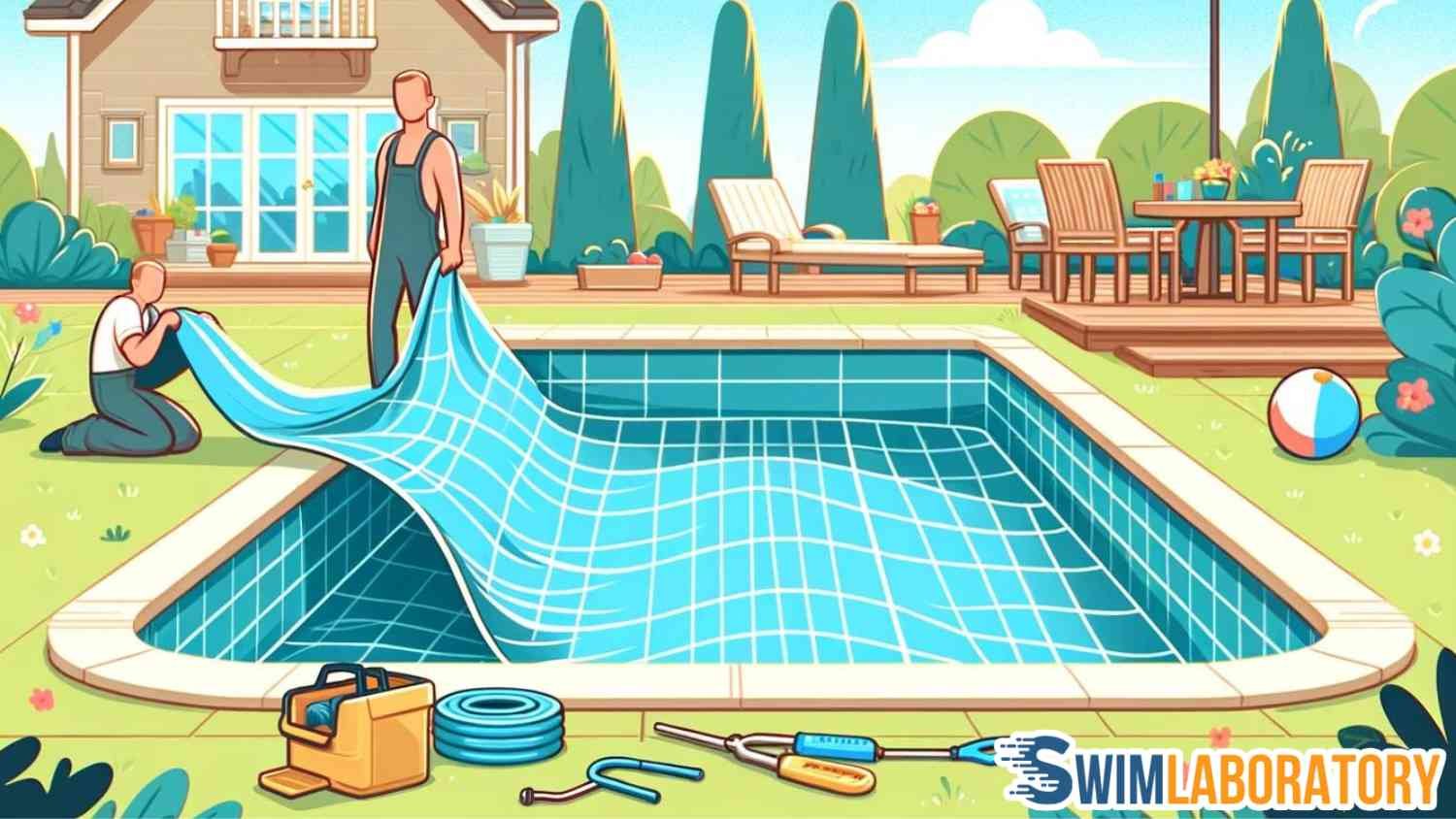Removing pool liner wrinkles is essential for a well-maintained and safe pool. Wrinkles trap debris like dirt and leaves, making cleaning tough and promoting unwanted bacteria and algae. These folds can stress the liner, raising the risk of tears from sharp objects or swimmers. Over time, this stress weakens the liner, leading to expensive repairs. Wrinkles can also catch swimmers, posing a risk, especially to children. In some cases, they may block water flow, causing chemical imbalances. This can affect pool hygiene and swimmer comfort. This guide explains how to remove pool liner wrinkles in 9 steps.
How To Remove Pool Liner Wrinkles?
To remove pool liner wrinkles effectively, follow these 9 steps. The steps are listed below.
- Fill the pool with fresh water and gently smooth out wrinkles as the pool fills. This method works well after the pool has been empty or at low water levels for a while.
- Wear soft-soled shoes and walk over the liner, stretching the wrinkles out by moving from one side to the other. This technique is simple and can resolve minor wrinkles.
- Use a clean, new toilet plunger to pull the liner and flatten wrinkles. Place the plunger near the wrinkle and plunge to adjust the liner’s position.
- Heat the pool water to about 92°F (33°C) to soften the liner, making it easier to work out the wrinkles with a pool brush or by walking over them.
- If wrinkles are severe, drain the pool completely. Be cautious and follow the correct procedure, especially for inground pools, to avoid damage.
- Once the pool is empty, use a Shop-Vac to suction out the wrinkles. Keep the liner wet and avoid direct contact between the vacuum and the liner to prevent damage.
- Check your landscaping for any issues that might be causing ground shifts and address them to prevent future wrinkling.
- Inspect for leaks, as water underneath the liner can cause it to wrinkle. Find and fix leaks promptly.
- If wrinkles persist, try using a Shop-Vac in reverse to blow air under the liner, then switch to suction to remove excess air and smooth out the liner.
For persistent or complex wrinkle issues, consider hiring a pool care professional. Sometimes expert intervention is necessary for a smooth, wrinkle-free liner. If all else fails and the wrinkles cannot be removed, it might be time to replace the liner. Ensure the new liner is installed correctly to prevent early wrinkling.
What Causes Pool Liner Wrinkles To Appear Suddenly?
Sudden wrinkles in pool liners often come from 4 key reasons. The reasons are listed below.
- Water chemistry imbalances in pool maintenance cause the vinyl to stretch.
- Heavy rain or high water tables push on the liner, creating bulges.
- Liners shift if they’re loosely anchored, especially around curves.
- Hidden pool leaks behind the liner might push it up, forming wrinkles.
How Often Should Pool Liners Be Checked For Wrinkles?
Pool liners need regular checks to stay smooth and safe. Here’s a simple guide.
- Weekly: Check during summer, the busiest swim time. Also, inspect after storms to catch any new wrinkles early.
- Monthly: A good rhythm for cooler months when the pool sees less action.
- After Changes: Take a look if the water level drops or rises quickly. This can help spot problems fast.
- Special Situations: If you spot a new wrinkle or use chlorine tablets, give your liner a quick check. This helps keep your pool in top shape all year round.
Can Wrinkles Damage The Pool Liner Over Time?
Yes, wrinkles in a pool liner can inflict long-term damage. Although minor wrinkles might not pose immediate concerns, they can lead to issues that accelerate liner degradation. Wrinkles act as repositories for debris such as dirt and leaves, which can promote bacterial and algae growth, thereby compromising the liner’s condition. The added stress from wrinkles increases the liner’s susceptibility to tears and punctures, particularly in the presence of sharp objects or irregular pool surfaces. Moreover, wrinkles can disrupt water circulation, resulting in chemical imbalances that may render the liner brittle or discolored, further diminishing its longevity and necessitating eventual replacement.
How To Prevent Wrinkles When Installing A New Pool Liner?
Preventing pool wrinkles when installing a new pool liner involves 7 steps. The steps are listed below.
- Measure accurately: Ensure the liner fits your pool’s dimensions perfectly. Correct measurements prevent wrinkles.
- Clean the pool surface: Remove debris, bumps, and sharp objects. A smooth surface helps the liner lay flat.
- Choose a warm day: Warm temperatures make the liner flexible. Install on a day above 70°F (21°C) for best results.
- Unfold gently: Lay out the liner without creating creases. Smooth handling prevents initial wrinkles.
- Start from the bottom: Place the liner’s center at the pool’s bottom. Smooth out towards the edges to avoid air pockets.
- Fill slowly: Add water gradually. This lets the liner adjust evenly to the pool shape.
- Use a vacuum: Create suction with a vacuum behind the liner for a snug fit. This step pulls the liner tight, eliminating potential wrinkles.
Follow these seven pool troubleshooting steps for a smooth, wrinkle-free pool liner installation.
Are Certain Types Of Pool Liners More Prone To Wrinkling?
Yes, certain pool liners are more susceptible to wrinkling, influenced by factors such as material thickness and composition. Thinner liners tend to wrinkle more easily compared to their thicker counterparts. Liners composed of materials with higher calcium carbonate content may also exhibit a greater propensity for shrinking and wrinkling over time, highlighting the importance of selecting high-quality liner materials to mitigate the risk of wrinkling and ensure the liner’s durability and aesthetic appeal.

